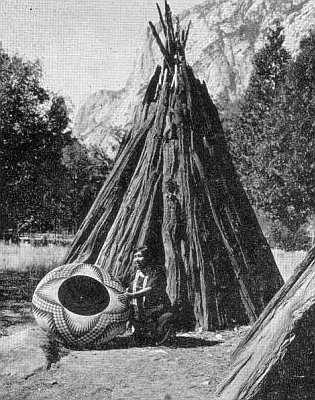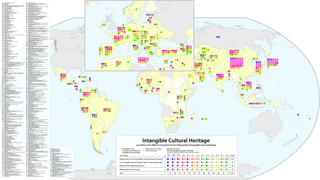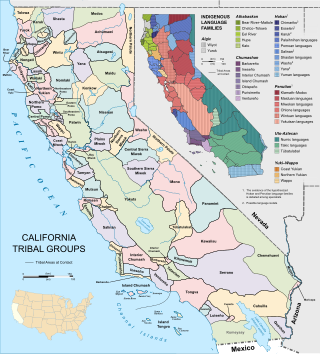Related Research Articles

Espresso is one of the most popular coffee-brewing methods, of Italian origin. The French also made a significant contribution to the invention of the first coffee makers, predecessors of today's espresso machines, and generally to the café culture. Espresso can be made with a wide variety of coffee beans and roast degrees, in which a small amount of nearly boiling water is forced under 9–10 bars of pressure through finely-ground coffee beans. Espresso is the most common way of making coffee in southern Europe, especially in Italy, France, Spain, and Portugal, but it is also popular in the rest of the world.

A handicraft, sometimes more precisely expressed as artisanal handicraft or handmade, is any of a wide variety of types of work where useful and decorative objects are made completely by one's hand or by using only simple, non-automated related tools like scissors, carving implements, or hooks. It is a traditional main sector of craft making and applies to a wide range of creative and design activities that are related to making things with one's hands and skill, including work with textiles, moldable and rigid materials, paper, plant fibers, clay, etc. One of the oldest handicraft is Dhokra; this is a sort of metal casting that has been used in India for over 4,000 years and is still used. In Iranian Baluchistan, women still make red ware hand-made pottery with dotted ornaments, much similar to the 5000-year-old pottery tradition of Kalpurgan, an archaeological site near the village. Usually, the term is applied to traditional techniques of creating items that are both practical and aesthetic. Handicraft industries are those that produce things with hands to meet the needs of the people in their locality without using machines.

The International Union for Conservation of Nature (IUCN) Red List of Threatened Species, also known as the IUCN Red List or Red Data Book, founded in 1964, is an inventory of the global conservation status and extinction risk of biological species. A series of Regional Red Lists are produced by countries and organizations, which assess the risk of extinction to species within a political management unit.

Scissors are hand-operated shearing tools. A pair of scissors consists of a pair of metal blades pivoted so that the sharpened edges slide against each other when the handles (bows) opposite to the pivot are closed. Scissors are used for cutting various thin materials, such as paper, cardboard, metal foil, cloth, rope, and wire. A large variety of scissors and shears all exist for specialized purposes. Hair-cutting shears and kitchen shears are functionally equivalent to scissors, but the larger implements tend to be called shears. Hair-cutting shears have specific blade angles ideal for cutting hair. Using the incorrect type of scissors to cut hair will result in increased damage or split ends, or both, by breaking the hair. Kitchen shears, also known as kitchen scissors, are intended for cutting and trimming foods such as meats.
Luxottica Group S.p.A. is a Milan-based eyewear conglomerate which is the world's largest eyewear company. As a vertically integrated company, Luxottica designs, manufactures, distributes, and retails its eyewear brands all through its own subsidiaries.
Make is an American magazine published since June 2019 by Make: Community LLC which focuses on Do It Yourself (DIY) and/or Do It With Others (DIWO) projects involving computers, electronics, metalworking, robotics, woodworking and other disciplines. The magazine is marketed to people who enjoyed making things and features complex projects which can often be completed with cheap materials, including household items. Make is considered "a central organ of the maker movement".

Basket weaving is the process of weaving or sewing pliable materials into three-dimensional artifacts, such as baskets, mats, mesh bags or even furniture. Craftspeople and artists specialized in making baskets may be known as basket makers and basket weavers. Basket weaving is also a rural craft.

Straw plaiting is a method of manufacturing textiles by braiding straw and the industry that surrounds the craft of producing these straw manufactures. Straw is plaited to produce products including straw hats and ornaments, and the process is undertaken in a number of locations worldwide.

Lahıc is a village and municipality on the southern slopes of Greater Caucasus within the Ismailli Rayon of Azerbaijan. Population is approximately 860 people who speak the Tat language, also known as Tati Persian, a Southwestern Iranian language spoken by the Tats of Azerbaijan and Russia.

Fedora Linux is a Linux distribution developed by the Fedora Project. It was originally developed as a continuation of the Red Hat Linux project. It contains software distributed under various free and open-source licenses and aims to be on the leading edge of open-source technologies. It is now the upstream source for CentOS Stream and Red Hat Enterprise Linux.

A hat block, also known as a hat form or bashing block, is a wooden block carved into the shape of a hat by a craftsman known as a block shaper. It is used by hat makers and milliners to produce a hat. Today there are only a handful of block shapers left. In the United Kingdom, hat block making has been listed as an endangered craft by the Heritage Crafts Association, with three remaining hat block making businesses still in operation as of 2022.

Art in Action was an art and craft festival held in the grounds of Waterperry House in Oxfordshire. For 4 days each July artists and craftsmen set up their studios in marquees so that visitors can watch them at work. Visitors could interact with the artists, view their exhibited work, as well as buy and commission art. Art in Action ended after 40 years in 2016 due to key staff members retiring and difficulties in finding replacements for them. Handmade in Britain is hoping to take over this exhibition from 2021.

Kelly Jean Church is a black ash basket maker, Woodlands style painter, birchbark biter, and educator.

UNESCO established its Lists of Intangible Cultural Heritage with the aim of ensuring better protection of important intangible cultural heritages worldwide and the awareness of their significance. This list is published by the Intergovernmental Committee for the Safeguarding of Intangible Cultural Heritage, the members of which are elected by State Parties meeting in a General Assembly. Through a compendium of the different oral and intangible treasures of humankind worldwide, the programme aims to draw attention to the importance of safeguarding intangible heritage, which UNESCO has identified as an essential component and as a repository of cultural diversity and of creative expression.
Heritage Crafts is a registered United Kingdom charity set up to support and promote traditional crafts. It has been operating under the name Heritage Crafts since October 2021.

Mary Jackson is an African American fiber artist. She is best known for her sweetgrass basket weaving using traditional methods combined with contemporary designs. A native of coastal South Carolina and a descendant of generations of Gullah basket weavers, Jackson was awarded a MacArthur Foundation fellowship in 2008 for "pushing the tradition in stunning new directions." Mary Jackson is a recipient of a 2010 National Heritage Fellowship from the National Endowment for the Arts.

Minecraft is a 2011 sandbox game developed by Mojang Studios. The game was created by Markus "Notch" Persson in the Java programming language. Following several early private testing versions, it was first made public in May 2009 before being fully released in November 2011, with Notch stepping down and Jens "Jeb" Bergensten taking over development. Minecraft is the best-selling video game in history, with over 238 million copies sold and nearly 140 million monthly active players as of 2021. It has been ported to several platforms.

A Dorset button is a style of craft-made button originating in the English county of Dorset. Their manufacture was at a peak between 1622 and 1850, after which they were overtaken by machine-made buttons from factories in the developing industries of Birmingham and other growing cities.
Pat Courtney Gold was a Wasco Native fiber artist and basket weaver from the Columbia River area of Oregon. She graduated with a BA in mathematics and physics from Whitman College and worked as a mathematician-computer specialist before beginning her career in basket weaving. Gold harvested traditional plant fibers to use in her work—including Dogbane, cattail, sedge grass, red cedar bark and tree roots. Her pieces often reflected the natural world along the Columbia River, mixing traditional motifs such as condors and sturgeon with contemporary figures like airplanes. Gold also became an environmental and cultural educator, helping to spread knowledge of her ancestral heritage and basketry skills.

A fully feathered basket is a type of basket crafted by a select group of Indigenous people of California who have traditionally resided in the coastal region of Northern California above San Francisco. The baskets are distinguished by the matted layer of feathers, which completely cover the exterior of the basket. They are highly collectible and renowned for their fine craftsmanship.
References
- 1 2 3 "Handmade in Britain". The Countryman . Archived from the original on 23 October 2018. Retrieved 23 October 2018.
- ↑ "The HCA Red List of Endangered Crafts". Heritage Crafts. Archived from the original on 2018-10-23. Retrieved 2018-10-23.
- 1 2 3 Adams, Callum. "Cricket ball makers declare the end of their handcraft". The Times. Archived from the original on 24 October 2018. Retrieved 23 October 2018.
- ↑ "Crafts in the UK: een kennismaking". Expertisecentrum voor Technisch, Wetenschappelijk en Industrieel Erfgoed. Archived from the original on 23 October 2018. Retrieved 23 October 2018.
- 1 2 3 "The HCA Red List of Endangered Crafts 2019 edition" (PDF). HCA. Archived (PDF) from the original on 25 July 2020. Retrieved 10 March 2019.
- ↑ "Sixteen ancient British crafts in new danger of vanishing forever, says Heritage Crafts Association". The Mail. Retrieved 2019-03-10.
- ↑ "The HCA Red List of Endangered Crafts 2021 edition" (PDF). HCA. Archived (PDF) from the original on 13 June 2021. Retrieved 13 June 2021.
- 1 2 Morris, Steven. "Kilt-making and sheet glass-blowing added to list of UK's endangered crafts". The Guardian. Archived from the original on 25 May 2021. Retrieved 26 May 2021.
- ↑ "Craft skills under threat with 17 additions to the Red List of Endangered Crafts". Heritage Crafts. Archived from the original on 15 May 2023. Retrieved 15 May 2023.
- 1 2 Morris, Steven. "From boatbuilding to barge painting, traditional British crafts at growing risk". The Guardian. Archived from the original on 15 May 2023. Retrieved 15 May 2023.
- 1 2 Illgner, Amalia. "Raiders of the lost crafts". The Independent. Archived from the original on 23 October 2018. Retrieved 23 October 2018.
- ↑ Williams, Rhiannon. "Meet the British endangered craft practitioners passing on their skills through Airbnb". i News. Archived from the original on 19 January 2019. Retrieved 18 January 2019.
- 1 2 "Rare craft skills are on the brink of extinction…". The Guild of Master Craftsmen. Archived from the original on 23 October 2018. Retrieved 23 October 2018.
- ↑ "Endangered Crafts". Woman's Hour. 4 May 2017. BBC Radio 4.
- ↑ "Mapping Heritage Craft : The Economic Contribution of the Heritage Craft Sector in England". Creative & Cultural Skills . Archived from the original on 24 May 2013. Retrieved 23 October 2018.
- 1 2 Morris, Steven. "Hats off to craft skills – before they disappear for good". The Guardian. Archived from the original on 23 October 2018. Retrieved 23 October 2018.
- 1 2 Swithinbank, Robin. "Just How Endangered Is Watchmaking?". New York Times. Archived from the original on 20 February 2019. Retrieved 20 February 2019.
- ↑ Santorelli, Leisha. "Heritage Crafts: Some skills risk becoming extinct in UK, charity warns". BBC News. Archived from the original on 14 May 2023. Retrieved 15 May 2023.
- 1 2 Sawer, Patrick. "Prince Charles bemoans decline of 'treasured' craft skills". Daily Telegraph. Archived from the original on 24 October 2018. Retrieved 23 October 2018.
- 1 2 "Pearl Binder At The Whitechapel Bell Foundry". Spitalfields Life. Archived from the original on 11 March 2019. Retrieved 10 March 2019.
- ↑ Wade, Mike. "Sporran maker given marching orders". The Times. Archived from the original on 13 June 2021. Retrieved 13 June 2021.
- ↑ "The Last Clog Maker in England". Archived from the original on 2019-01-12. Retrieved 2018-10-27.
- ↑ "Pictures: Sixteen ancient British crafts in danger of disappearing forever". Dorset Echo. Retrieved 2019-03-10.
- ↑ "Craft skills under threat - including hand papermaking and mould making - PITA - Paper Industry Technical Association". www.pita.org.uk. Archived from the original on 2019-03-26. Retrieved 2019-03-26.
- ↑ "The UK's last vellum producer fights on after losing Parliament's business". Archived from the original on 2018-10-27. Retrieved 2018-10-27.
- ↑ Doughty, Eleanor (22 March 2017). "Papering over tradition: the fury of Britain's last vellum maker". Archived from the original on 27 October 2018. Retrieved 27 October 2018– via www.telegraph.co.uk.
- ↑ Wainwright, Martin (20 March 2012). "Cowsheds resound with output of first British piano maker for 78 years". The Guardian. Archived from the original on 27 October 2018. Retrieved 27 October 2018.